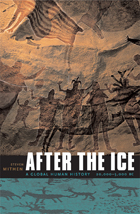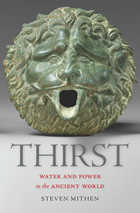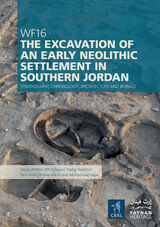
20,000 BC, the peak of the last ice age—the atmosphere is heavy with dust, deserts, and glaciers span vast regions, and people, if they survive at all, exist in small, mobile groups, facing the threat of extinction.
But these people live on the brink of seismic change—10,000 years of climate shifts culminating in abrupt global warming that will usher in a fundamentally changed human world. After the Ice is the story of this momentous period—one in which a seemingly minor alteration in temperature could presage anything from the spread of lush woodland to the coming of apocalyptic floods—and one in which we find the origins of civilization itself.
Drawing on the latest research in archaeology, human genetics, and environmental science, After the Ice takes the reader on a sweeping tour of 15,000 years of human history. Steven Mithen brings this world to life through the eyes of an imaginary modern traveler—John Lubbock, namesake of the great Victorian polymath and author of Prehistoric Times. With Lubbock, readers visit and observe communities and landscapes, experiencing prehistoric life—from aboriginal hunting parties in Tasmania, to the corralling of wild sheep in the central Sahara, to the efforts of the Guila Naquitz people in Oaxaca to combat drought with agricultural innovations.
Part history, part science, part time travel, After the Ice offers an evocative and uniquely compelling portrayal of diverse cultures, lives, and landscapes that laid the foundations of the modern world.

The propensity to make music is the most mysterious, wonderful, and neglected feature of humankind: this is where Steven Mithen began, drawing together strands from archaeology, anthropology, psychology, neuroscience--and, of course, musicology--to explain why we are so compelled to make and hear music. But music could not be explained without addressing language, and could not be accounted for without understanding the evolution of the human body and mind. Thus Mithen arrived at the wildly ambitious project that unfolds in this book: an exploration of music as a fundamental aspect of the human condition, encoded into the human genome during the evolutionary history of our species.
Music is the language of emotion, common wisdom tells us. In The Singing Neanderthals, Mithen introduces us to the science that might support such popular notions. With equal parts scientific rigor and charm, he marshals current evidence about social organization, tool and weapon technologies, hunting and scavenging strategies, habits and brain capacity of all our hominid ancestors, from australopithecines to Homo erectus, Homo heidelbergensis and Neanderthals to Homo sapiens--and comes up with a scenario for a shared musical and linguistic heritage. Along the way he weaves a tapestry of cognitive and expressive worlds--alive with vocalized sound, communal mimicry, sexual display, and rhythmic movement--of various species.
The result is a fascinating work--and a succinct riposte to those, like Steven Pinker, who have dismissed music as a functionless evolutionary byproduct.

Water is an endangered resource, imperiled by population growth, mega-urbanization, and climate change. Scientists project that by 2050, freshwater shortages will affect 75 percent of the global population. Steven Mithen puts our current crisis in historical context by exploring 10,000 years of humankind’s management of water. Thirst offers cautionary tales of civilizations defeated by the challenges of water control, as well as inspirational stories about how technological ingenuity has sustained communities in hostile environments.
As in his acclaimed, genre-defying After the Ice and The Singing Neanderthals, Mithen blends archaeology, current science, and ancient literature to give us a rich new picture of how our ancestors lived. Since the Neolithic Revolution, people have recognized water as a commodity and source of economic power and have manipulated its flow. History abounds with examples of ambitious water management projects and hydraulic engineering—from the Sumerians, whose mastery of canal building and irrigation led to their status as the first civilization, to the Nabataeans, who created a watery paradise in the desert city of Petra, to the Khmer, who built a massive inland sea at Angkor, visible from space.
As we search for modern solutions to today’s water crises, from the American Southwest to China, Mithen also looks for lessons in the past. He suggests that we follow one of the most unheeded pieces of advice to come down from ancient times. In the words of Li Bing, whose waterworks have irrigated the Sichuan Basin since 256 BC, “Work with nature, not against it.”

READERS
Browse our collection.
PUBLISHERS
See BiblioVault's publisher services.
STUDENT SERVICES
Files for college accessibility offices.
UChicago Accessibility Resources
home | accessibility | search | about | contact us
BiblioVault ® 2001 - 2024
The University of Chicago Press









